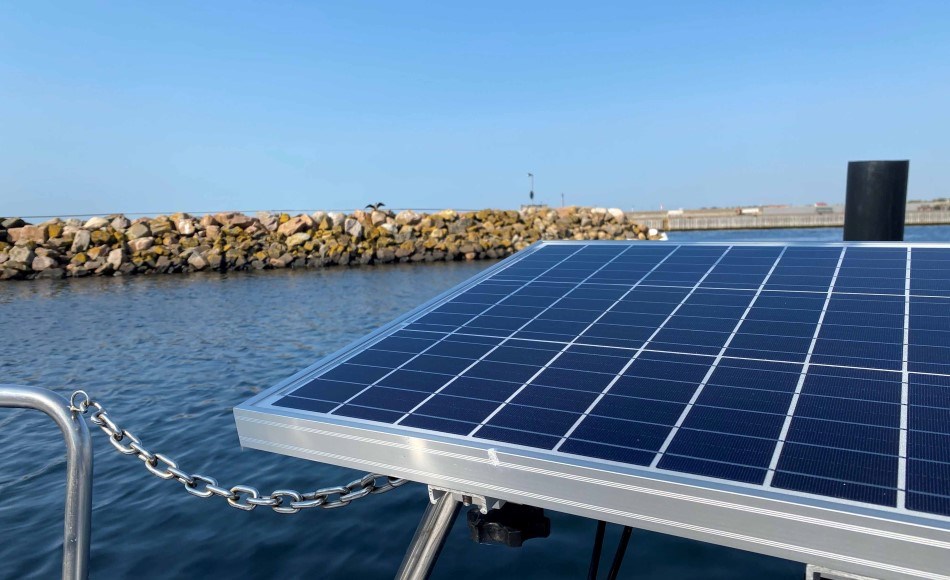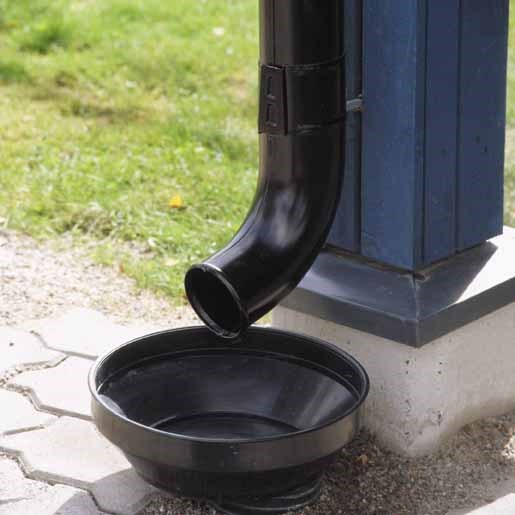Solar panels – the energy source of the future
Using solar panels is an investment for both the environment and the wallet. As long as the sun is shining, you have an energy source that gives you 100% renewable energy and you effectively contribute to reducing emissions of greenhouse gases and fossil fuels.
How do solar panels work?
Many people talk about solar cells when talking about solar-powered electricity. The solar cells are what are inside the solar panels and they are the parts that convert the sunlight into electricity. When sunlight hits the solar cell, an electrical current is created between its front and rear, and direct current is generated. The current from Biltema's solar panels is around 19-20V and must be regulated down to usable current using a charge regulator. You need to connect your regulator to a battery for it to work.
Which solar panel should I choose?
We have two types of solar panels in our range, Polycrystalline and Monocrystalline.
Don't forget that our solar panels should always be used with a solar panel regulator!
Polycrystalline
These panels usually have an aluminium frame and are a little thicker. These solar panels are climate-smart choices and can be mounted on boats, caravans, cabins and motorhomes, for example.. The panels are fitted with mounts and you need to connect a battery that is charged using the solar panel.
Monocrystalline
Our second type of solar panel called Monocrystalline is a significantly thinner solar panel. This is well suited to slightly curved surfaces, which means that the installation can be very slim. You can use these solar panels to recharge batteries that you use on boats, caravans, cabins and motorhomes. The panels can easily be fixed to, for example, the roof of your motorhome. The solar panels called Monocrystalline are suitable for those with greater energy needs, as they are more efficient than the solar panels called Polycrystalline.
Let your energy needs determine the solar panel you buy
The solar panels need to be flexible and easy to use if you are going to use the solar panels on your motorhome while driving to the campsite or on your boat for a day-trip.
You will find different solar panels that match your needs in our range that can be mounted as fixed installations or used as portable solar panels.
Less power requirement
We offer portable solar panels that efficiently charge your connected battery if your energy needs are not huge. The solar panel can be used at the motorhome's location or as an energy source to charge the battery that powers your bilge pump on the boat.
Our portable solar panel has a power of 30W and a built-in regulator - all you need is a 12V battery. We also offer a foldable and portable solar panel, which is perfect for hiking, in the car or at the campsite. The solar panel has two USB sockets, so you can charge your phone, tablet or other equipment. The solar panel has a waterproof and durable case.
Greater power requirement
If you have greater energy needs and, for example, need to charge a larger battery bank or energy supply your motorhome, caravan, smaller cabin or boat, we have a 100W portable solar panel with Monocrystalline solar cells. You also charge your phone smoothly using the USB input in the regulator.
The solar panel has a built-in PWM regulator and has a complete system for portable use. The solar panel, which is our most flexible and largest solar panel, is easy to position and angle towards the sun, and is easily folded up and carried like a bag. A five metre cable with battery clamps is included.
Solar panel regulators
The current created in the solar panels must be reduced to usable current before being connected to a battery, which is achieved with the help of a solar panel regulator.
The solar panel regulator plays an important role in your solar panel system and there are two main types when we are talking about 12-24V systems.
If you are going to install your solar panels, it is important that you choose a regulator that can handle the current produced by the solar panel. One tip is to combine the solar panel and the regulator with moving mounts, so that you can optimise the angle of the panels to the sun.
How to choose the right regulator
The choice of regulator is influenced by which solar panel you have and your energy needs. When looking for the right regulator, it is not always easy to understand the numbers and information you need. What does it all mean?
Solar panel regulator MPPT
Our MPPT regulator is the most efficient model and compresses the entire current from the solar panel. This results in the current increasing so you get an efficient charge and maximum power from your solar panel.
Solar panel regulator PWM
PWM - the regulator is well suited for installations where you do not require maximum power from your solar panel. The PWM regulator uses only the amount of current required by the battery and thus does not utilise all the remaining current in the solar panel.
How to read the information about our regulator:
- 12/24V - This is the current the regulator can handle.
- 20A - Is the maximum current for the regulator.
- Maximum input power: 260W at 12V and a maximum of 520W at 24V. So in this case the solar panels can be a maximum of 260W. In other words, 2 x 100W panels and 1 x 50W panel for one individual regulator.
- Maximum input current: Maximum 100V. Here it depends on whether you choose to connect the panels in series or in parallel, as this affects the current.
- Series connection of panels: Gives the best output over time if the panels may end up being in the shade.
- Parallel connection: The best option if there is no risk of the solar panels ending up being in the shade.
Install your solar panels
There are a few different options when it comes to installing your solar panels. You can use the bracket which is screwed in place. You can also use glue if you have a monocrystalline panel.

Test the installation
Start by placing your panels, solar panel regulator and batteries where you want them. Mark where the cables will go, and make sure these are of the right length and dimensions.
Fixing elements
It’s a good idea to install the polycrystalline together with our solar panel holder. This is a simple bracket that is screwed to the ceiling, wall or similar.
If you would rather be able to adjust the panels according to the direction of the sun, 25-5092 is a good alternative. These solar panel holders are easily mounted on 25mm pipes. This type of bracket is a universal model and is easily cut to fit your solar panel.
Glue
It’s a good idea to glue the monocrystalline solar panels to the surface; they are also bendable and can be mounted on a curved roof. The important thing when gluing panels is that you clean the surfaces properly before gluing. Use a solvent that removes grease and dirt without damaging the surface. When you are ready to glue the panel, we recommend our universal glue BT Multibond Rapid, which adheres to most surfaces.
Example calculation to measure your energy needs
Lighting: 4 lamps at 0.5A each = 2A total. If the lights are on 24 hours a day, they consume 2A x24h = 48AH
To have sufficient output to cover a particular energy consumption with a solar panel system, you perform the following calculation.
Under optimal conditions, a 100W solar panel provides a maximum of about 6A, which in practice results in about 4A. We have about 15 hours of sunshine during the summer in southern Sweden, which in theory will be 4Ax15h = 60Ah (adjust the calculation depending on the number of hours of sunshine you have where you live)
We will use the previous example calculation with the lamps and assume that those lamps are the only energy source you want to supply with electricity from your solar panels.
You then have a consumption of 48Ah/day and we have a solar panel system that generates 60Ah on a sunny day, which means an overcapacity of 12Ah/day.
In other words, 12Ah/day is produced which the lamps do not consume. You should always have a safety margin when choosing the output of your solar panels. It is better to produce a little too much electricity than the other way around!
Some things worth remembering about batteries
To achieve maximum battery life for a lead/acid/AGM battery, never go below half capacity. If I have 2 x 100AH batteries, I have a total capacity of 200AH, but should only use a total of 100AH of these without charging. This does not apply to Lithium, which can withstand significantly deeper discharges.



